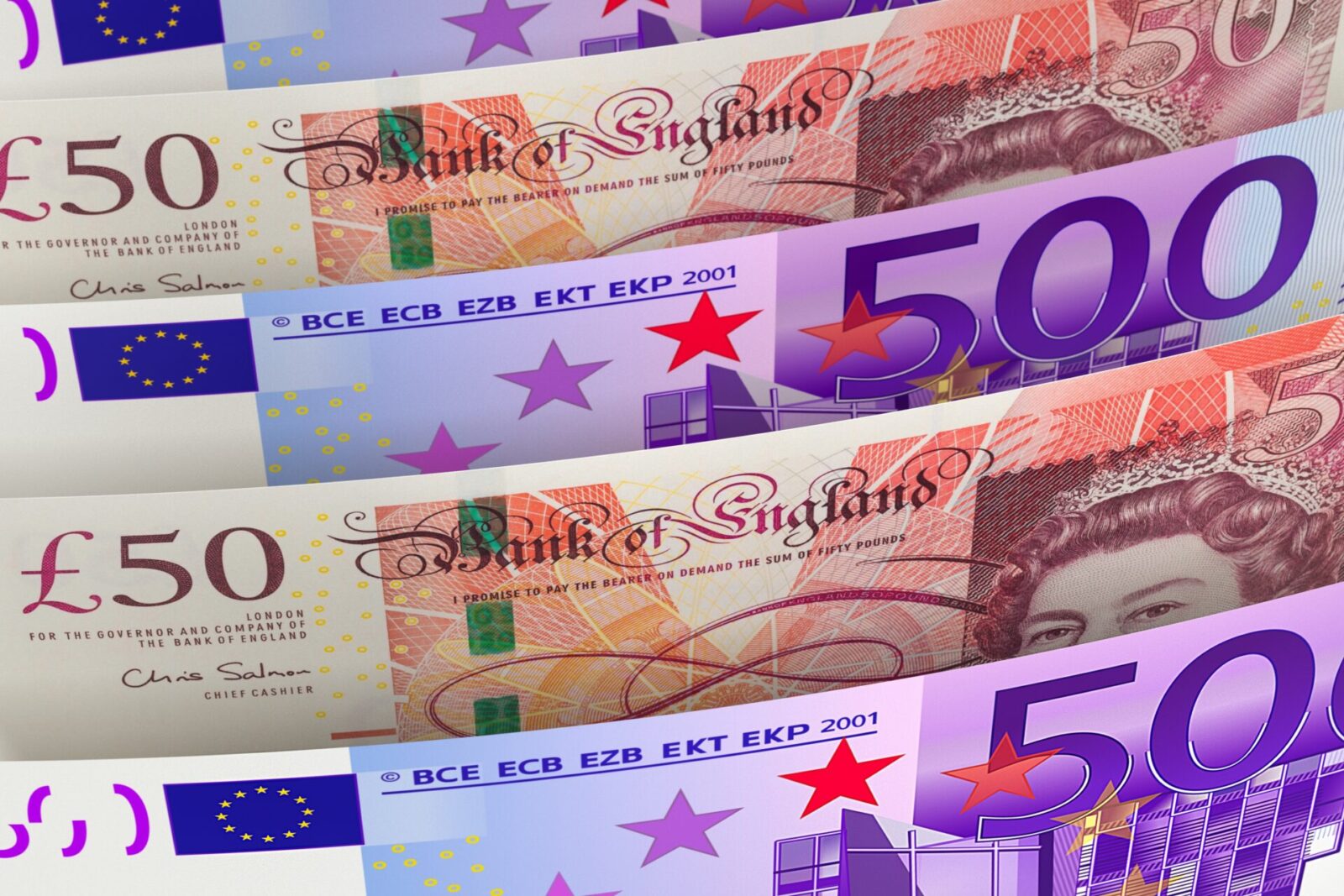
The pound and the euro rallied to apply pressure to the US dollar on Monday.
Sterling and the euro each made sizeable advances at the expense of the US dollar on Monday. After a weekend of high political drama, a newly bullish mood swept through Europe, bolstered by cooling inflation and some muted numbers coming out of American manufacturing.
GBP/USD and EUR/USD each picked up around one cent yesterday, with sterling moving close to its highest level of 2025 against the US dollar. Despite a few peaks and troughs, GBP/EUR ended the day around where it had begun.
Eurozone inflation fell from 2.5% to 2.4% February, according to preliminary data. Price increases slowed in key areas like professional services and energy but picked up for some kinds of food and industrial materials.
In a sign of just how much foreign policy is dominating financial markets, European defence companies – the likes of BAE systems, Rheinmetall and Thales – have led a thundering rally since the start of the year. The Stoxx Europe aerospace and defence index, which tracks major military hardware and software providers, closed in on its best day in over four years.
Overnight, the United States announced it would suspend military aid to Ukraine. The decision was framed as an effort to force Ukraine back to the table on the minerals deal, although Ukrainian officials dismissed it as “unbelievable”.
The US manufacturing purchasing manager’s index (PMI) fell to 50.3 in February from 50.9 in January, below forecasts of 50.5. Price growth increased due to new tariffs, which also caused new order placement backlogs, supplier delivery stoppages and impacted inventories.
A new study from a prominent economic thinktank poured more fuel on the US dollar’s fire. The Peterson Institute for International Economics said the 25% tariffs on Mexico and Canada amounted to “the largest tax increase in at least a generation” that would cost the average American household over $1000 per year.
Earlier, a strong performance in China’s own PMI study helped the Chinese yuan build some momentum. While it failed to bring home any significant gains against rival currencies, the country’s focus (in the short-term, at least) is ensuring it staves off the worst of any potential tariffs coming from the USA. Robust manufacturing output is key to that strategy.
Make sure any upcoming transactions are protected against the risks of sudden market movements. Secure a fixed exchange rate now with a forward contract; call your account manager on 020 3918 7255 to get started.
GBP: A fantastic February
After a tricky opening to the year, sterling enjoyed a month of undoubted progress across February. The pound gained two cents against the euro and more than three cents against the US dollar throughout the short month and will look to build on that momentum into spring.
GBP/USD: the past year
EUR: Bulls fight back
The eurozone needed some good news and it certainly got that yesterday. Inflation fell in February, paving the way for another interest rate cut, and the euro clawed back some territory against the US dollar. Thursday’s rate decision does present another possible stumbling block, as does the next chapter in the unfolding geopolitical story.
GBP/EUR: the past year
USD: Uncertainty abounds
The US dollar took a hit on Monday, partly due to economic data, but also because of some lingering uncertainty around Donald Trump. On Monday, government officials hinted they were considering another delay to introducing tariffs on Canada and Mexico. Taken alongside last week’s Oval Office railroading of Ukraine, the US dollar is struggling under the weight of an intensely volatile political climate.
EUR/USD: the past year
For more on currencies and currency risk management strategies, please get in touch with your Smart Currency Business account manager on 020 7898 0500 or your Private Client Account Manager on 020 7898 0541.

 020 7898 0500
020 7898 0500